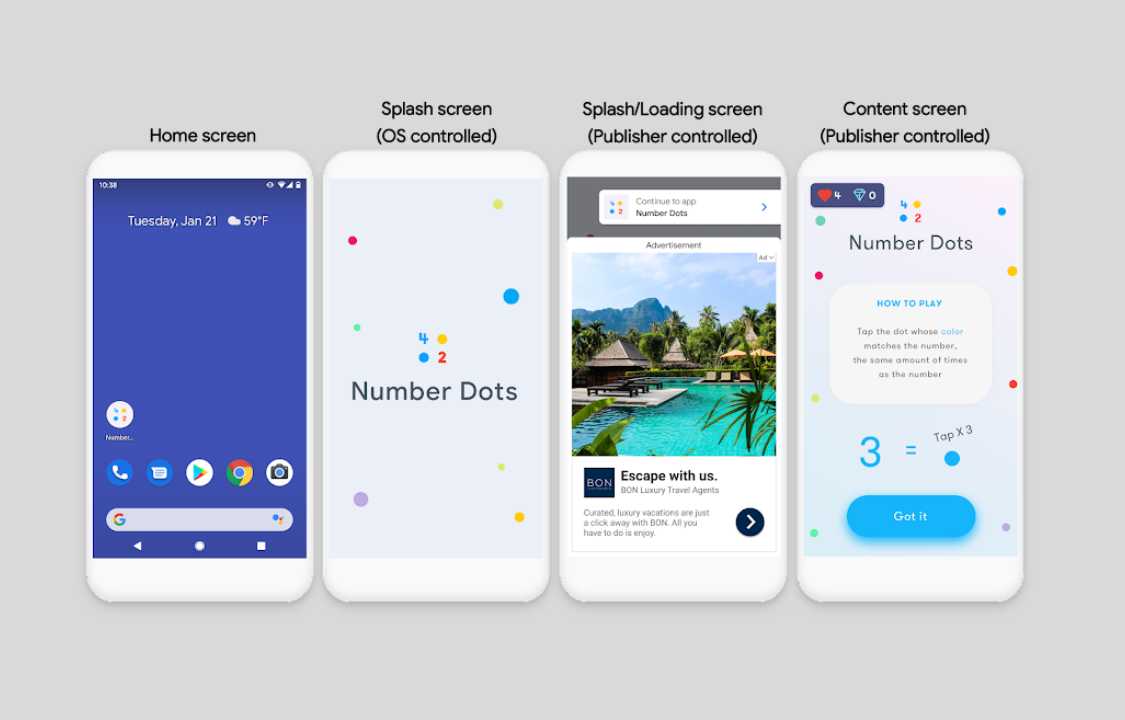Everything You Need to Know About App Open Ads

by local
Mobile advertising has evolved significantly over the years, and app open ads have emerged as an effective and engaging ad format. These ads offer a unique opportunity for advertisers to connect with users as they launch a mobile app. In this guide, we will explore everything you need to know about app open ads, including what they are, how they work, their benefits, and best practices for implementing them in your mobile app.
What Are App Open Ads?
App open ads, also known as app launch ads or splash screen ads, are a type of mobile ad that is displayed to users when they open a mobile application. These ads appear before the app’s main content loads and typically cover the entire screen for a few seconds. App open ads are a form of interstitial advertising, and they are designed to capture users’ attention during the app launch process.
How Do App Open Ads Work?
The functionality of app open ads is relatively straightforward:
- User Launches the App: When a user opens a mobile app, the app open ad is displayed as the first thing the user sees. This ad appears before the app’s content is fully loaded.
- Ad Display: The app open ad is shown in a full-screen format, often containing a combination of images, text, and call-to-action buttons. Users have the option to interact with the ad or dismiss it.
- Engagement Options: Depending on the design of the app open ad, users may have various engagement options. They can click on the ad to visit the advertiser’s website, download an app, or perform another desired action.
- Duration: App open ads are typically displayed for a few seconds, after which they automatically close, allowing users to access the app’s main content.
- Frequency: Advertisers can control the frequency and timing of app open ads to ensure a positive user experience. These ads can be displayed every time the app is launched or at specific intervals.
Benefits of App Open Ads
App open ads offer several advantages for both advertisers and app publishers. Here are some of the key benefits:
1. High Visibility:
- App open ads have maximum visibility as they appear front and center when users launch an app. This prime placement increases the chances of users noticing and engaging with the ad.
2. Engagement:
- These ads provide an excellent opportunity for advertisers to capture users’ attention during a moment of high engagement, right when they are about to use the app.
3. Monetization:
- App publishers can generate revenue by displaying app open ads. This additional income stream can be valuable for app developers.
4. User Retention:
- Well-designed and relevant app open ads can enhance the user experience rather than disrupt it. Engaging ads can contribute to user retention and satisfaction.
5. Targeting Options:
- Advertisers can use advanced targeting options to ensure that their app open ads reach the most relevant audience, increasing the likelihood of conversions.
6. Tracking and Analytics:
- Advertisers can track the performance of their app open ads using analytics tools. This data helps optimize ad campaigns for better results.
Best Practices for Implementing App Open Ads
To make the most of app open ads and ensure a positive user experience, consider the following best practices:
1. Relevance:
- Display app open ads that are relevant to the app’s audience and context. Irrelevant ads can frustrate users and lead to a negative experience.
2. Design:
- Create visually appealing and engaging ad creatives that capture users’ attention without being overly intrusive. Use high-quality images and concise, compelling copy.
3. Frequency Capping:
- Implement frequency capping to control how often users see app open ads. Avoid bombarding users with ads every time they launch the app.
4. Load Time:
- Optimize ad load times to ensure that users can access the app’s main content quickly. Long loading times can lead to user frustration.
5. Clear Call to Action (CTA):
- Include a clear and prominent CTA button in the app open ad to encourage user interaction. The CTA should match the goal of the ad, such as getting people to join an app or go to a website.
6. Testing and Optimization:
- Continuously test different ad creatives, messaging, and targeting options to optimize the performance of app open ads. Use A/B testing to identify what works best.
7. Compliance and Transparency:
- Ensure compliance with ad industry standards and regulations, including user data privacy rules. Be transparent about data collection and use in your ads.
8. User Feedback:
- Listen to user feedback and monitor app store reviews to gauge user sentiment regarding app open ads. Address any concerns or issues promptly.
Conclusion
App open ads offer a valuable opportunity for advertisers to engage with users during the app launch process. When implemented effectively, these ads can provide a win-win situation for both advertisers and app publishers. Advertisers can capture users’ attention at a prime moment, while publishers can generate additional revenue. However, it’s crucial to prioritize user experience and relevance to ensure that app open ads enhance rather than disrupt the app usage. By following best practices and continually optimizing ad campaigns, advertisers and app publishers can harness the potential of app open ads to achieve their objectives and provide a positive user experience.



